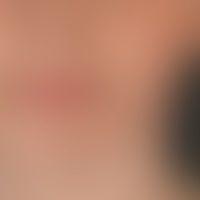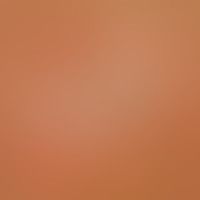Image diagnoses for "Skin depressions"
62 results with 201 images
Results forSkin depressions

Acrodermatitis chronica atrophicans L90.4
Acrodermatitis chronica atrophicans. clearly visible, flabby skin atrophy and edematous redness on the right foot in a serologically proven infection with borrelia. the comparison to the left leg shows the clear difference. the patient spends several months in the black forest every summer.

Atrophy of the skin (overview)
Atrophy of the skin due to long term internal use of glucocorticoids; skin is paper thin and easily torn.

Atrophy of the skin (overview)
Atrophy of the skin due to long term internal use of glucocorticoids.
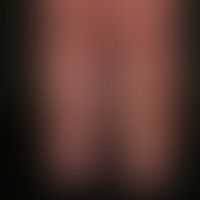
Atrophy of the skin (overview)
Atrophy of the skin due to many years of internal use of glucocorticoids. Bizarre scars due to tearing of the skin after banal abrasions.
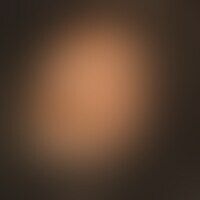
Aplasia cutis congenita (overview) Q84.81
Aplasia cutis congenita. 8.0 x 6.0 cm, yellowish-white alopecic focus with shiny surface, existing since birth, unchanged for years except for size increase during physical growth.
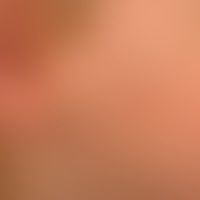
Aplasia cutis congenita (overview) Q84.81
Aplasia cutis conenita: Cheek on the right. Symptomless, sunken, scarred lesion.

Acne cystica L70.03
Acne cystica: In acne-typical distribution besides numerous (black) comedones and bridge comedones, numerous skin-coloured sebum retention cysts.

Anetoderma L90.1
Anetodermia (detailed view of multiple foci). slightly conspicuous, skin-coloured, symptomless, flat skin depressions with atrophic, finely wrinkled skin surface. scar-like aspect.
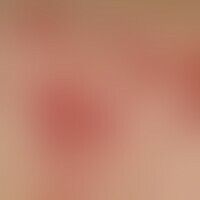
Acne conglobata L70.1
Acne conglobata: confluent and melting acne pustules, here aggregated to an atrophic red scar.

Bednar's aphthae K12.0
Bdnar's aphthae: large, very painful flat ulcers in the vestibulum oris covered with fibrin. 77-year-old patient has been suffering from these aphthae continuously for more than 1 year.
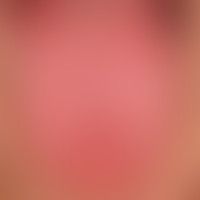
Lingua plicata K14.5
Lingua plicata with pronounced exfoliatio areata linguae (not infrequently occurring comorbidity ).

Leishmaniasis cutaneous recurrent
Leishmaniosis recidivans: cutaneous leishmaniasis with 2 differently sized, painless, brownish, sharply defined plaques (self-infiltrate in diascopy)

Atrophy senile of the skin L90.8
Atrophy, senile: age-related involution of the lip skin with radial furrow formation.

Disabling pansclerotic Morphea L94.1
Scleroderma, circumscribed. untreated, ligamentous, circumscribed scleroderma with extreme atrophy of the skin, subcutaneous fatty tissue and muscles, joint contractures

Disabling pansclerotic Morphea L94.1
Scleroderma, circumscribed. Pan-sclerotic, mutant form in a 15-year-old boy.

Disabling pansclerotic Morphea L94.1
Scleroderma circumscribed pansclerotic: 12-year-old boy of oriental origin. 3 months ago first appeared, strongly progressive sclerosis, partly ulcerated and covered with blackish necroses. A highly febrile disease of unexplained aetiology lasting more than 3 days preceded the skin symptoms by 14 days.
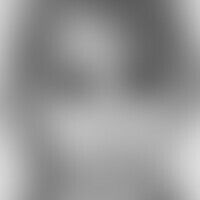
Parry Romberg syndrome G51.8
Hemiatrophia faciei progressiva: Progress documentation, Figure 2: 12-year-old female patient with clear perceptible changes in the disease.

Parry Romberg syndrome G51.8
Hemiatrophia faciei progressiva: Progress documentation, Figure 3: Neurological (facial paresis) and ophthalmological (oculomotor paresis) complications in the context of circumscribed scleroderma en coup de sabre at the age of 16
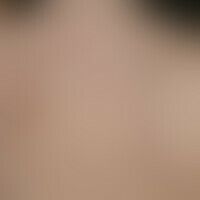
Circumscribed scleroderma L94.0
plaque type of circumscribed scleroderma: large, circumcircularly bounded, red-violet, surface smooth plaques with centrally embedded, bizarre whitish indurations. the surface is shiny like parchment. there is a feeling of tension. no pain.
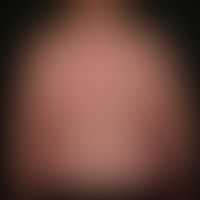
Striae cutis distensae L90.6
Striae cutis distensae: Fresh (red), symmetrical striae after many years of internal and local (steroid inhalation) therapy with glucocorticoids for bronchial asthma.

Lupus erythematodes chronicus discoides L93.0
Lupus erythematosus chronicus discoides: a chronic cutaneous lupus erythematosus that has existed for several decades, with intermittent progressive, scarring (see whitish skin areas without any follicle markings).


